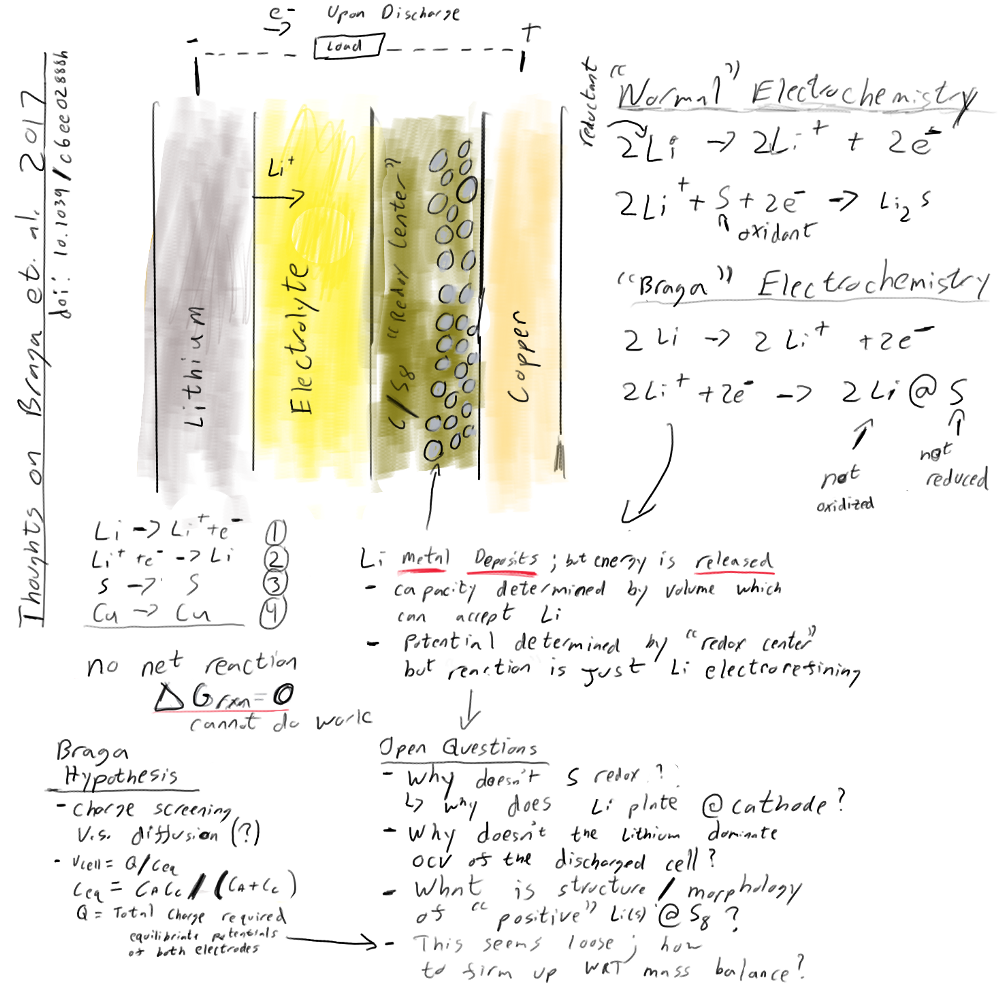Experts question the work of the new Gudenaf solid-state battery

For many decades, scientists have been looking for ways to safely use powerful, but flammable, pure lithium in batteries. John Goodenough , a 94-year-old father of lithium-ion batteries, claims to have found a new solution.
The scientist and his team from the University of Texas at Austin developed the first solid-state battery cells that could lead to safer and faster battery charging and also make them more durable.
')
If this is true, the invention can allow electric cars to compete with conventional ones at a price, as well as extend the life of mobile devices and stationary energy storage elements. The incredible solution described in the article by Gudenaf and his three co-authors attracted great interest from leading scientific and technical publications. According to his estimates, this type of battery can store 5-10 times more energy than the usual lithium-ion batteries. However, scientists began to ask questions about the possibility of conserving this amount of energy and not violating the basic laws of thermodynamics.
Gudnaf said that in his battery cell a 10-fold increase in energy density was achieved in one experiment, and a 3-fold increase in another. In one of the subsequent tests, it was possible to achieve even a 30-fold increase - 8.5 kWh / kg. In this case, he did not need any expensive exotic materials - the scientist and his team cost sodium and sulfur. If, after all, Gudenaf succeeds in destroying the doubts of the scientific community, his battery can indeed be widely used.
Not surprisingly, the work of Gudenaf and his team caused excitement among the representatives of science. On February 28, the University of Texas reported that scientists had invented a method for introducing a pure lithium or sodium anode, which, because of its energy potential, had been the main target for decades. The key factor that allowed this to happen was the use of glass as an electrolyte, which connected the two electrodes of the battery and contributed to the movement of ions to generate electricity.
However, other leading researchers in this area were skeptical about the discovery of Gudhaf. They are confident that if you carefully study the study, it will become clear that the scientist has questioned the laws of thermodynamics, which are fundamental to the development of batteries for more than half a century.
Gudenaf's long career has defined the modern battery industry. Researchers believe that his measurements are accurate. But no one, except Gudenaf and his colleagues, seems to have understood his new concept. The community of researchers does not want to openly challenge the person who determined the development of the industry. “If someone else had published such an article, I would hardly have been able to find polite words,” said Daniel Steingart, a professor at Princeton University.
Gudnaf does not respond to letters, but in a statement published on the website of the University of Texas where he continues to work, he said: “We believe that our discovery solves many of the problems inherent in modern batteries. Cost, safety, energy density, level of charge, discharge and life cycle are critical for battery-powered vehicles that are not yet widely available. ” In addition, lead study author Helena Braga (Helena Braga) in response letters claims that the invention of the team really works.
Despite all his merits, the latter work put the scientific community at a standstill. The article does not say how a new invention of Gudanath can store energy? The known laws of solid state physics dictate that to obtain energy from different materials it is necessary to produce different electro-chemical reactions in two opposing electrodes. This difference creates tension, allowing energy to be conserved.
But the battery cells of Gudenath and his team consist of pure lithium or sodium on both sides. Therefore, the voltage must be zero. The scientist reports that the energy density is increased several times compared with the usual batteries. Where does energy come from, if there is no reaction occurring in the electrodes? In scientific work, this question is left unanswered.
Professor Steingart analyzed the work of Gudenath and called the energy hidden in the element "anomalous ability". And he also asks if oxygen has leaked into the battery cells, which could inadvertently create a lithium-air battery, which would explain this energy density. Lithium-air batteries are the second Holy Grail in science, even more elusive than the pure lithium anode. No one has yet been able to make such an element that lasted longer than several cycles.

Helena Braga, in turn, denies the "lithium-air" explanation, insisting that their battery cells are solid. She also notes that during the experiment, their battery sustained hundreds of cycles - longer than any rechargeable lithium-ion battery.
For nearly four decades, Gudnafeh has been a key figure in the world of modern batteries. In 1980, he invented the lithium-cobalt-oxide cathode, which went on sale in 1991. However, since then the batteries that are massively supplied to the market, leave much to be desired. Modern battery technology is a major obstacle to the development of technologies of the future, including the mass production of electric vehicles. Batteries are too expensive for them and they charge for a long time.
Source: https://habr.com/ru/post/402503/
All Articles